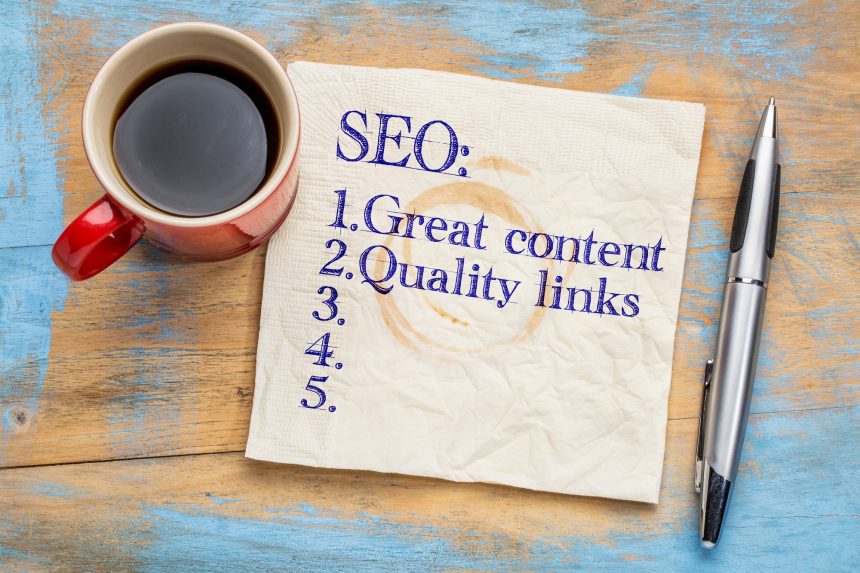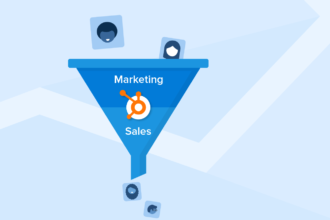SEO means “search engine optimization.” In simple words, it is a process of improving your Website ranking. SEO increases your Website visibility for relevant searches. This process is maximizing the number of visitors & readers to a particular website. It ensures that the Website appears high on the list of results returned by a search engine.
If you want to be the best SEO expert in Bangladesh, you must stick to the best SEO practices. Otherwise, all your hard work on your site will be for nothing.
Have you ever wondered what the greatest SEO techniques for websites are? That is what you will read about in this article. Here sharing some suggestions and practices for you to implement on your website
7 Best SEO Practices for Website
We will introduce you to the essential SEO best practices for websites to follow for every page on your site. Here you will know about the 7 best SEO practices that will help you to Google ranking.
-
Make websites structure clear, natural, & up-to-date:
Make your website’s navigation and architecture SEO-friendly and appealing to your target audience. When it comes to identifying and indexing pages, search engines are affected by a website’s link structure. If your website is well-structured and natural, all of its pages and subpages will be indexed and readily accessed by search engine users.
Natural navigation will also work for your regular site visitor. It will assist them in determining what they are looking for in the shortest period of time. According to the ‘three clicks’ guideline –
“Any data on a site should be accessible to a crawler in no more than three clicks.”
You can simply attain such a well-maintained site with the assistance of the best SEO BD. Having such support ensures that you do not make any mistakes with your website’s SEO.
-
Page URL:
URL refers to a web address. URL has two parts – 1st part contains primary access and 2nd part identifies the domain name.
- Include primary keyword on-page URL: Make sure that the primary keyword is a part of the page URL. URLs are a minor ranking factor in search engines; you can use them when determining a particular page or resource’s importance to a search query. Uses keywords in a URL can also act as a ranking factor.
- On the URL page, use hyphens instead of underscores: If you use underscores instead of hyphens to separate words from a URL name, Google will read it as one word. For this reason, don’t forget to Use hyphens on URL structure.
- Choose static URL address: Web addresses are two types: dynamic and static. Search engines can easily understand both URL addresses, but humans don’t understand dynamic URLs.
For example, if you have any blog on WordPress, you can see that a specific post’s default URL address is dynamic.
- Keep URL address descriptive, brief & relevant: A visitor should tell what a specific website is all about.
If you want to choose to edit a URL address for your Website, then not only works in approval of the keyword optimization but also makes it easier for visitors to understand what they can find on a specific website. This way, a searcher’s life make a bit easier.
One suggestion for making this task easier. Make use of an SEO auditing tool.
Using an audit tool, you can thoroughly examine your website’s URL. And, based on the data generated by White Label SEO Reporting Tool, you will be given recommendations for how to optimize your URL further. That’s how simple it is to make your page URL SEO-friendly.
Also see: 11 Quick and Easy SEO Tips to Make Your Mark on the First Page of Search Engines
-
Title-tag, alt-attribute & meta- description:
Title-tag is an HTML element; it is displayed on search engine results pages (SERPs). Title-tag, alt-attribute & meta-description are essential for Google ranking.
- Create a title tag for every single page of your Website: A title tag describes your domain. Title-tag is one short sentence to describe your online space. It will show up in several places, such as the SERPs, external pages, social media, and browsers.
The title should be short, eye-catchy, and original enough to attract the audience.
- For presenting your brand better, use meta-description: There is a short paragraph displayed under a title tag on the SERP called Meta description. A meta-description introduces your brand to a searcher. It pays a visit to your Website and sees the products that you offer.
The meta-description is between 150-160 characters.
- Use alt-attributes for all of the images – Search engines can read the ALT text; they don’t read pictures. It could be best to use an ALT attribute to help the search engine to understand better the meaning of a photo and what it represents.
Use keyword or keyword phrases (LSI keyword) to describe the images to the webpage itself.
-
Keywords & LSI keywords:
Keyword & LSI Keyword will increase your rank. Don’t stuff keywords in your content much time; it looks odd. But, you can use LSI Keyword it will give your content a unique look & high rank
- Find the keyword that will work for you: Find out the words which visitors type into a search bar to look for websites; it is the key to a good SEO strategy. SEO is much based on keywords & LSI keywords.
Google Keyword Planner is a marvelous way to do keyword research. If you open a Google AdWords account, then the Google Keyword Planner tool is available to you, which is also free. After creating your Google Keyword account, you’ll get a list of keywords. It would help if you chose those keywords that are popular among users from the list. - Mix different types of keywords also: There are three types of main keywords: generic, long tail, and broad match. All of them are different and attract a bit of traffic. The most effective strategy is to mix every type of keyword to get other varieties of traffic.
Generic keywords are general and very unspecific terms. That’s why Generic keywords are very competitive. Broad match keywords provide the right balance between the traffic and its relevance. The long phrases that people type into search bars are Long tail keywords. This keyword won’t bring a lot of traffic to your Website.
You may have a question in your mind – which type of keyword is best?
The answer is – if you are new in SEO, then long tails are usually the best keywords for you. Long-tail keywords are generally long 4+ words. When you type a generic keyword into Google, then you get a list of long-tail keywords. - Include location in your keyword: This way, you will optimize your Website and your business for both local clients and local searches.
- Use keywords in headlines, sub-headlines, anchor text & meta-descriptions: In a content structure, the best places to put your keywords are headlines, sub-headings, and anchor texts.
Don’t ever use the “click here” term when you are describing links! The word will not give you information about what can be found under a link, and also you will miss the chance to optimize a text link. - Use the primary keyword naturally, your on-page content: You have to fit the keyword in the content naturally. But don’t overdo stuff your content with too many keyword phrases. You will make your web page spammy and unattractive both for engine crawlers and users if you do that. Keyword stuffing can harm your site’s rankings.
- Keep Focus on one keyword while optimizing a web page: It is best to optimize a web page with one keyword rather than several ones at a time. When you focus on one keyword, you’ll be sure that it gains all the SEO power. Optimize the headline and Meta tags of a website along with its body text.
- Using proper keywords, optimize all images: With appropriate keywords, optimize all photos. Always use keyword phrases, not only in the Website’s content but also in the image description. It’s good practice to use words such as “picture,” “photo,” “image,” along with your chosen keyword while describing an image with an ALT attribute.
- Track the performance of all keywords when you start SEO: You have to follow the search rankings of your Website. If you don’t know how specific keywords work for your positions in SERPs, you may stop doing SEO. To optimize a website is a long-term process; it requires correctly tracking all your efforts. In the case of keywords, you have to know which ones work best for your rankings.
-
Content still wears SEO crown
- Only publish keyword-rich, fresh & high-quality content: Nowadays, the most important SEO factor is a website’s content. If you provide useful, unique, and actionable information for users, then the search engine will rank your Website higher in SERPs. Do you want to get the best optimization results? So, you have to update your content as much as possible. This way, you’ll keep your Website high ranking, fresh, and your viewers interested.
- Attention to spelling & grammar of your content: High-quality content means correct spelling and grammar.
People often make spelling mistakes in search bars. Some users are not good at grammar; for them, there is not-so-recommended technique advice to optimize a website for misspelled keywords. So, they could easily find it. Misspelling words and poor grammar can harm your Website’s rankings.
- Make your content valuable, unique & brand-new: If you run an online business, the most challenging job is to make your Website stand out in the depth of the internet. There’s no magic technique that can be applied and give excellent results. But, search engines always reward those websites that bring unique & real value to their users.
A site with unique, informative, useful, intelligible, and valuable information will gain more exposure in the SERPs. Search engines rank high those websites which try to make a difference, brand-new, and provide real value for people.
- Prepare content that attracts your targeted audience: Not every content will be enticing for every user out there. Your Website will find itself in front of random readers from time to time. But, your job is not to please everyone; you have to create content suitable to customers’ needs.
- Plan your content strategy carefully: You should have a unique design for content creation that you publish on your Website. You should know precisely what kind of information you would like to publish, and also how often. It applies especially when you run a blog within your Website. Start planning a strategy for content creation.
- Make your content that easy to read: On the Internet, people go to scan text rather than read it from page to page. That’s why you should have provided a clear & easy structure of each content.
Use headlines, subheadings, bolts, and bullets in the most appropriate sections of your text. Also, try to make your content richer – use photos, infographics, real-life examples to make your content reachable. Don’t forget to place proper keywords in the range.
- Take care of all matching content on your Website: Matching content – the same content that shows up multiple unique URLs – is not accepted by search engines. It can also cause a serious drop in a website’s rankings. But, sometimes, it’s challenging to avoid matching content, especially on e-commerce websites where the same products are presented on separate web pages with different colors or sizes.
For this reason, you should use a canonical tag. This tag points out which page should be considered as real with matched content.
Also see: Understanding eCommerce SEO: Top 5 Tips and Tricks
-
Link building matters
The most important type of link is the backlink; it can improve a website’s rank. Creating a Backlink may be the SEO best practice for your Website.
- Create a Healthy & natural backlink profile for your Website: Inbound links that come to your Website right after the content are the second most important SEO factor. Its impact on your Website’s rankings.
From the first days of arranging an SEO strategy for your business, you should plan which link building method you’ll invest here. Pick some relevant and trusted websites that you’d like to receive backlinks for a good start.
- Actively gaining links aim only for the high-quality ones: Only links from trusted websites and high-quality that attract a higher amount of traffic can give you a fair and profound impact on your Website’s rankings. For this, Search engines start to trust your Website a bit more. When they find out it is a good source of knowledge, they are more willing to rank it higher in their SERPs.
Always remember that – quality is still more important than quantity when it comes to content, links, and SEO in general.
- Don’t provide sponsored links: Try to focus on reaching reliable blogs and provide them with real value rather than pay for highly promotional articles with a backlink to your Website. This type of publication won’t bring you much traffic, nor will it give you trust in readers’ eyes.
Real value generates engagement, backlinks, and traffic followers. When you give something beneficial, you’ll get a good quality backlink in return.
- Add a link back to another quality website: If you add a link to other websites, it will not only help to promote their content, but also let others know that you exist. If you provide high-quality content, people whose work you’ve added will be more willing to promote your site too.
- By helping people earn links: In the SEO world, links are the currency. When you allow other Websites by sharing your knowledge, valuable insights, free tools, and easy-to-implement tips, you will get something in return. Users usually feel grateful, and they need to give you something in exchange – they will provide you with links.
The good things are that domains that end with .edu (for education), .org (for organization), .gov (for the government), .info (for information) have higher domain authority than commercial sites and are far better worthy of search engines. Archiving links from them will give your Website a lot of reliability.
- Create that type of content that people would love to link to: As it was mentioned above, if you give real value to your audience, they will be happy to share it with their family and friends. This way, you will find ‘natural’ links that search engines are fond of.
- Build good relationships with websites from opening: Search engines always have actual smart algorithms. If you try to gain links from unnecessary websites, you won’t receive any connection, as search engines will recognize it as manipulative techniques.
It will be better if you invest your time in creating relationships with companies and websites from your niche. You could share valuable SEO, friendly content with your audiences, and safely grow your backlinks.
- Build your social media presence: Social media links are ‘no-follow,’ which means that they can’t give you a direct impact on your Google rankings. But, if you have a brand presence in social media channels, it can increase traffic to your Website and build your influence in general.
The more visible content is on your social media, the more chance is people will be interested in it via blog social bookmarking sites, posts, forums, and other avenues, naturally increasing your link profile.
- Search for guest blog exchange opportunities: Guest blogging is a safe and widespread process to gain backlinks. A blogger offers you to write a post on another blog from the same slot. He receives an essential inbound link while the blog host gets high-quality & unique content for free.
But, if you want this technique for you, the only way is to target high-quality & unique blogs that are also suitable for your Website, rather than participating in generic blog exchange networks.
- Don’t overplay guest blogging: A large scale of guest blogging only for link purposes is treated as a violation of Google’s rules. Guest blogging should bring value for the blogger, blog host, and users as well. SEO is always a long-term and time-consuming process.
Finally, ordinary people use search engines daily. If they can’t find relevant information, they will stop using them and change to other sources.
- Check the quality of your backlink profile: After completing any SEO technique, you need to check your efforts. For link building, you should have to check what results you get. It would be best if you did it for your hard work to pay and ensure that you do not injure your rankings with low-quality inbound links.
-
Find out what your competitor is doing for SEO:
Keep an eye always on your competitors. Find out what keywords they optimize for their websites and check their Google rankings with yours. Check it daily.
Check what websites they published on and what content they provide on their blog. You should not copy their SEO strategy, but you have to find out your unique way of optimizing your Website.
Tips for best SEO practices
- Add your primary keyword early in your content (3/4 times in body part).
- Create a unique title, description, meta-descriptions, and contents.
- Optimize your title tag & image for SEO and also site loading speed.
- Use an internal link.
- Publish high-quality content.
- Build backlinks for your Website.
- Improve site user experience.
Hopefully, those tips will help you be a good start for making your online presence user-friendly and more visible in this content. If your content has an eye-catchy title, mentions the keyword 3 / 4 times, has backlinks, and has a good strategy, then it is high-quality SEO-friendly content. It can help you to improve your Google ranking.
If you want to adopt SEO techniques for your website, you must follow all of the recommendations in this article, and then you will be successful.














